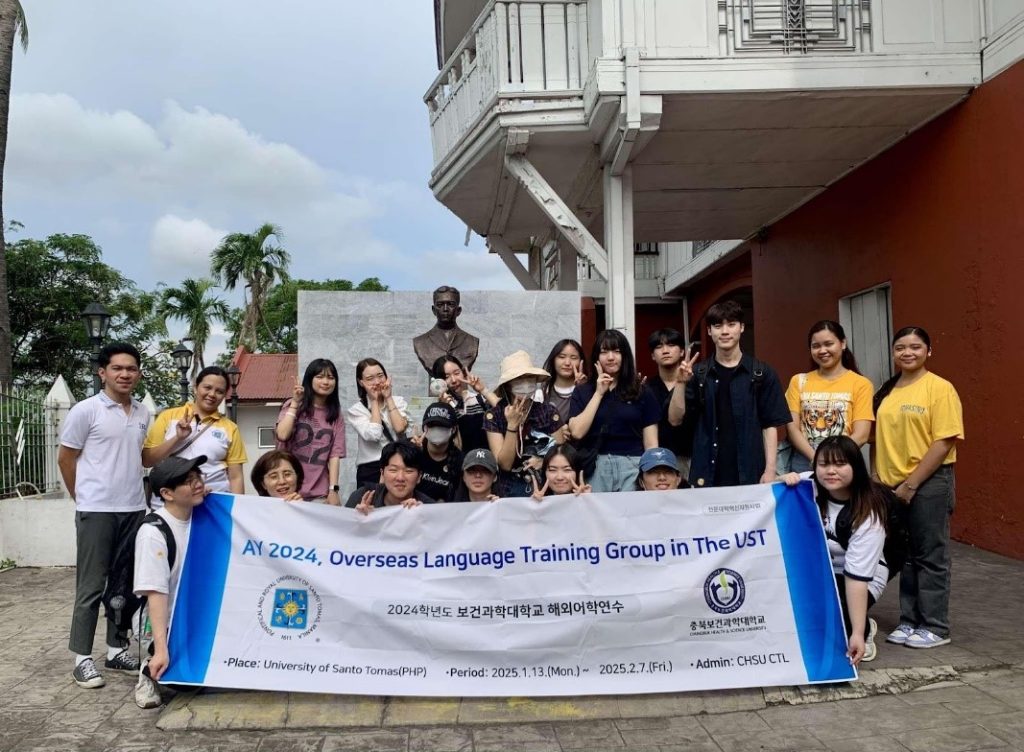The University of Santo Tomas Graduate School Center for Conservation of Cultural Property and Environment in the Tropics (CCCPET), in collaboration with the UST Office for International Relations and Programs, UST Language Center, and the Local Government Units of Taal, Batangas and Montalban, Rizal, organized a series of cultural heritage immersion tours for international students as part of the Intensive English Language and Filipino Culture Course offered by the UST Language Center. These tours provided students from South Korea and Taiwan an experience of the Philippines’ rich cultural and historical heritage.


Students from Central Police University in Taiwan participated in a cultural heritage immersion tour in the towns of Taal, Batangas and Tagaytay, Cavite on January 18. A similar heritage tour was conducted on January 24 for students from Chungbuk Health and Science University (CHSU) in South Korea.
The immersion tour allowed students to explore the cultural heritage of Taal, known for its well-preserved ancestral homes and historical landmarks. They visited museums and heritage houses where they gained insights into the town’s rich history and its significance in preserving Philippine heritage.
As part of the experience, the students partook of traditional Filipino meals and learned about Filipino dining customs. They also participated in a pictorial session dressed in traditional Filipino attire from the Spanish colonial period. In Tagaytay, where the students enjoyed more Filipino cuisine while taking in the breathtaking view of Taal Lake and Taal Volcano.
Students from CHSU also participated in a heritage tour of Montalban, Rizal in February. The tour introduced the students to the indigenous culture of the Dumagat people. The program began with an overview of the municipality’s history, followed by a visit to an ancestral home. The group then traveled to Barangay Puray, where the Dumagat community resides. There, the students participated in a tree-planting activity and engaged with the Dumagats, who shared their traditional knowledge and practices, including fishing, use of medicinal plants, indigenous cooking methods, and various crafts such as weaving, bead-making, and the crafting of traditional tools.
Overall, the heritage experience was an effective way for the international students of the UST La


